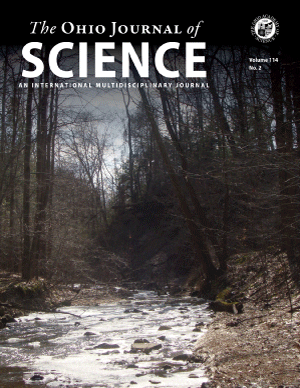Revised Predictive Model for Successful Introduction of Native Ohio Brook Trout (Salvelinus fontinalis) in Select Streams in Geauga and Lake Counties, Ohio a
DOI:
https://doi.org/10.18061/ojs.v114i2.4433Keywords:
Brook Trout, Cold water streams, hyporheic zone, isotope tracer, macroinvertebratesAbstract
Eight cold-water streams in Lake and Geauga Counties, Ohio were evaluated to develop a revised predictive model to assess future streams for the introduction of threatened native Ohio Brook Trout (Salvelinus fontinalis). A 15-month study was conducted, ending May 2010, in streams where Brook Trout were previously introduced during the years 1997-2002. Fifty percent of the sixteen original reintroduction streams failed to support the establishment of self-sustaining populations of Brook Trout, indicating there were additional factors contributing to their success and failure. Of the 8 streams included in this study, 4 streams were designated successful, 2 variable, and 2 failed, in terms of the Brook Trout’s ability to establish self-sustaining populations by the Ohio Department of Natural Resources (ODNR). Multivariate statistical methods including Principal Component Analysis (PCA) and Agglomerative Hierarchical Cluster Analysis (AHCA) were implemented to determine the most important characteristics in Brook Trout stream selection. Factors found to be significant for Brook Trout success were stream velocities within the range of 1.4-4.7 cm/s, high hydraulic conductivity of the headwater bedrock aquifer (K>4.7 x 103 cm/s), lighter average δ18O ‰ (-9.8 to -10.4), either high percent canopy cover (40%-55%) or high percent instream cover (18%-37%), a high number of cold-water adapted benthic macroinvertebrate cold-water taxa (10-16 species), yearly average hyporheic water temperature of 4.6°C-17.2°C, average surface water turbidity of 7 to 31 NTU and long-term surface water temperature and dissolved oxygen monitoring over both winter and summer seasons is recommended prior to Brook Trout introduction to ensure their sustainability.
Downloads
Published
Issue
Section
License
Copyright (c) 2016 Katherine Springer Amey

